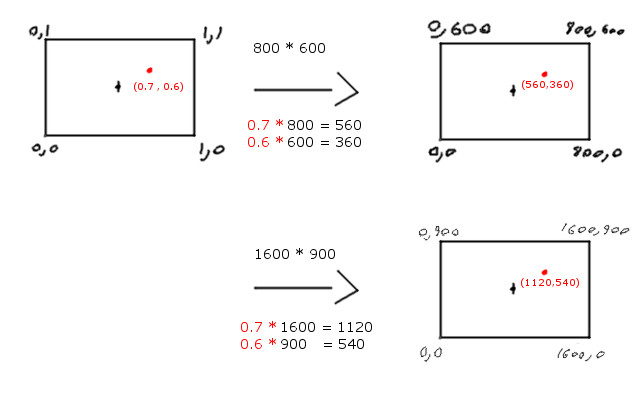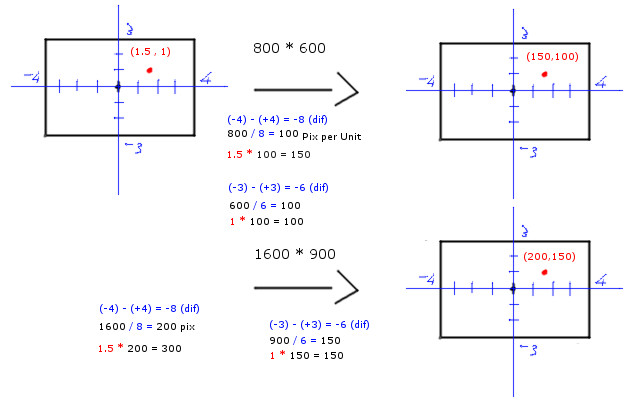Hello!
I know that working with absolute positions and sizes on sprites and collision-boxes is not a good idea if one wants to support multiple resolutions.
But what ways are being used to actually scale properly?
What I know is working in percentages (and offsets). One would define a vector of x and y (both between 0 and 1) and an offset vector of x and y of arbitrary pixel size. Now multiply with the screen-size and add the offset and get the scaled absolute size. This would work for size as well, but probably without the offset.
So if an object is outside of the window, its relative coordinates would be higher than 1?
I assumed updating absolute coordinates is done once when the resolution has been altered and every sprite owns two attributes: relative and updated absolute coordinates. But then again sprites can move thus change their relational coordinates; it's probably easier to do the calculation every draw-call or maybe keep a "has sprite changed its size/position"-flag/bool.
And I also assume that physics are calculated the same? Since the transformation is 1:1, every mouse click can be transformed into relational coordinates and then do the usual collision maths. Same goes for sprites, I would calculate movement in relational coordinates and with relational sizes and then alter the relational coordinates.
There is one issue on my mind, since all these values are meant to move in floating numbers (e.g. between 0 and 1 for everything inside the resolution/visible canvas), isn't there a float-point accuracy issue with different hardware? Especially if savegames are usable on other multiple devices, e.g. from desktop to smartphone.
On a final note, are there any other alternative systems for scaling sprites according to a resolution?
Thanks for your time.









